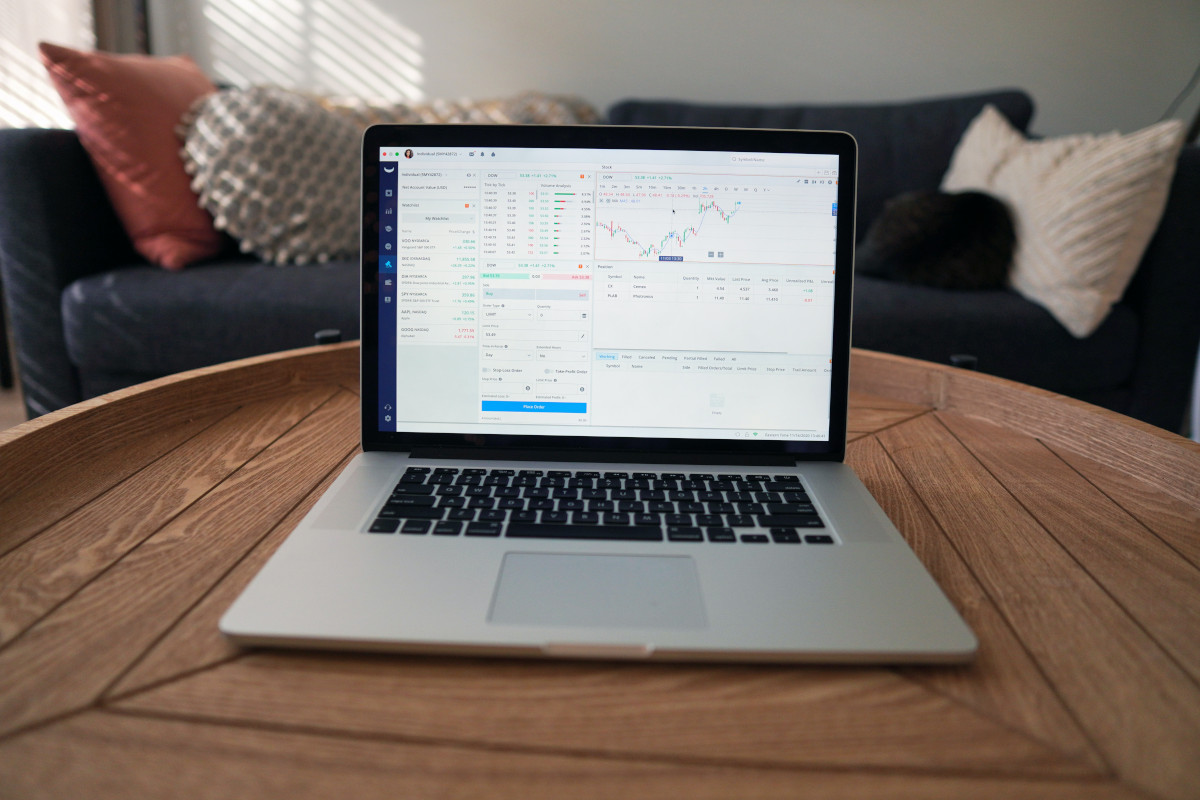Want to learn how to make money trading options? In this day and age, it’s easier than ever to earn a full-time income as an options trader. Yes – even if you have no existing trading experience!
Here at VectorVest, we have all the resources you need along with tools to empower you along this journey. And in this article, we’ll fully unpack the steps standing between you and your first profitable options trade. You’ll learn the basics of how options work, how to pick a stock and configure the actual options contract, and when to exercise.
We’ve got a lot to cover and we know you’re eager to hit the ground running making money trading options – so here’s what you need to know.
Featured Courses:
A Brief Introduction to Making Money Trading Options
Before we actually teach you how to make money trading options, we need to get you up to speed on what this investment strategy entails. So, what are stock options and how do they work?
These are contracts you can buy and sell on the stock market just as you would an existing company stock. However, the difference is in what you’re buying. These options contracts give you the right (but not the obligation) to buy or sell an underlying security, at an underlying price (the strike price), before a pre-determined date (the expiration date).
There are two types of options contracts: put options give you the right to sell the underlying stock in question while call options give you the right to buy the underlying stock in question.
In general, you’d buy put options when you expect the price of an underlying stock to drop in value. That way, you’re able to then sell the underlying stock at a premium to what it costs on the market. On the other hand, if you expect the underlying stock’s price to rise in the future, you’d buy call options, which would give you the right to buy that stock at a discount should your theory prove true.
So, at the broadest level, how do you make money trading options? Essentially, you need to be effective at forecasting future stock prices. If you are able to consistently project how a stock’s price will trend over a given period, you can either write options contracts or buy options contracts in your favor – earning a profit along the way.
We’ll talk more about how to make money trading options later, including whether you should act as the options writer or the buyer of the options. Let’s start by setting expectations.
Can You Make a Lot of Money Trading Options?
Just as with swing trading profits, options trading can be incredibly lucrative. In fact, any investment style can be. The hard part is being consistent in your strategy and keeping your wins big and your losses small (and infrequent).
In saying that, a better question is – how much money can I expect to make from trading options? This will be influenced primarily by your account size. The more money you’re able to leverage in your trading strategy, the higher your profits can be. It’s worth noting that your potential losses are also larger.
In comparing buying options vs stock from a profitability standpoint, you’ll typically earn higher returns from options. That’s because you’re able to buy contracts really cheaply and take advantage of more leverage than purchasing the underlying stock outright.
For example, say you’re willing to invest $1,000 right now on a trade for company XYZ with a current price of $100/share. You can only buy 10 shares of stock. However, you can buy options contracts for that same stock at a premium of $5/share. Because contracts are grouped by lots of 100, you can take advantage of way more leverage – effectively purchasing 200 shares with the same buying power.
Now, you would still potentially need the capital on hand to exercise your contract should it end up in the money (favorable). But in doing so, you earn a higher profit from the same movement in the stock’s price as you would owning the stock outright. That’s the power of leverage. Small account trading can still be quite profitable and make a lot of money. And as you can imagine, this is the main benefit of trading stock options.
In saying all this, stock options are quite a bit more complex than their traditional stock counterparts. There may be a steeper learning curve as you get the hang of the analysis and management that goes into this strategy. However, we’re here to guide you through it at a high rate of success – you’re in good hands at VectorVest! Let’s move on to the most profitable way to trade options.
What is the Most Profitable Way to Trade Options – as an Option Buyer or an Option Writer?
There are two ways you can go about making money trading options. While one may be more profitable than the other, it comes with increased risk.
The most common approach is to buy options contracts and hope they end up in the money before the expiration date – at which point you’d exercise the right to either buy or sell the underlying security in question at the strike price.
However, you can also consider making money trading options by learning how to sell stock options. This is the other side of the options trading market. Here, you write the options contracts yourself and sell them to other investors on the market. The way in which you profit here is by selling contracts that remain out of the money and end up expiring worthless. You earn a nice premium and don’t have to cover any costs.
The obvious risk here is when you write an options contract that ends up in the money – your losses can be virtually unlimited. Taking on that much risk can be tough to stomach for new investors, especially when considering how complex options trading can be in the first place. So with that said, we’ll walk you through how to make money trading options contracts below rather than writing them yourself.
How to Make Money Trading Options: Step-by-Step Guide to Your First Successful Trade
Ready to learn how to make money trading options? If you take the time to read carefully and follow all the advice we lay out below, you’ll be well equipped to enjoy a first profitable trade right out of the gates. Step one to making money trading options learn the ins and outs of options trading!
Invest in Yourself First – Dive Deep into Our Options Resources and Paid Courses
We have a complete guide explaining how to learn stock options trading. The common theme in that article is that you should take your time honing in your strategy before actually putting any money on the line.
We have free resources in our blog teaching you all about trading stock options for beginners. Some of the most important include how to pick stock for option trading, when to exercise options, and options trading risk management. These 3 guides will encompass everything you need to know about uncovering winning opportunities, managing your position, and hedging your trades/cutting losses.
Even still, it’s worth investing in paid courses. These offer far more detailed insights on how to consistently earn profits as a new options trader. And, they’ll speed up the learning curve. You can make your money back fast because you’ll get started sooner.
Before you actually start making money trading options, though, it’s worth playing around with paper trading – a way of simulating real-time trades with fake money. Trust us – you’re going to make mistakes at first. And with options trading, mistakes can be costly. It’s far easier to stomach those initial failures if you’re not losing real money in the process. This is something you can do within the VectorVest software.
Develop a Trading Plan That Aligns With Your Goals
Now – we want to take a quick step backward. Before you start paper trading, it’s a good idea to think about what you want out of this endeavor. Are you looking to earn a full-time income? Do you want to earn some cash on the side? Is your goal to hedge risk against other positions you have?
Options trading can make you as much money as you’d like – you just need to develop a trading plan that aligns with your financial goals, risk tolerance, and time horizon. Consider what you want to achieve with options trading, whether it’s income generation, capital appreciation, or portfolio protection.
Your plan should outline the types of options strategies you will employ, how much capital you’re willing to allocate to each trade, and the criteria for entering and exiting positions. This is something our advanced courses can help you navigate, so you feel confident in your strategy as you open your trading account.
Open Your Trading Account
There are countless brokers you can choose from that will allow you to trade options. Research and compare different brokers based on their fees, trading platform, customer support, and educational resources.
When opening your account, ensure you have the appropriate trading permissions to execute the strategies you plan to use. Additionally, be prepared to provide your financial information, investment experience, and risk tolerance as part of the account setup process.
Don’t worry too much about the level of analysis allowed in your brokerage account – because as you’re going to learn below, VectorVest is the platform you’re going to use to actually find opportunities and execute your trades.
Conduct Analysis to Uncover a Trend You Can Capitalize On
Just as with a swing trading strategy, you’ll rely on fundamental and technical analysis on the underlying assets you wish to trade. Fundamental analysis focuses on evaluating the financial health and competitive position of a company, while technical analysis examines historical price patterns and trends.
The specific method of analysis you use can vary from technical trading indicators to moving averages. Momentum indicators will be your bread and butter for uncovering trends and looking for potential price movement in either direction, as this will help you find favorable strike prices and determine the right time to exercise your options contract.
However, you should also rely on company news – as this is usually the first sign of what’s to come in terms of stock price. If a company lands a huge government contract, the price is probably going up. If the company is hit with a costly lawsuit, it’s probably going down. You can also rely on market sentiment indicators – which speak to how the overall market feels about a given company.
It can be hard to juggle all the different forms of stock analysis and tune out the noise – getting down to the nitty-gritty of what you should buy, and when you should buy it. That’s why you need the help of VectorVest’s intuitive stock analyzing software.
The system utilizes a proprietary stock rating system that simplifies everything for you. You’re given all the insights you need in just three simple ratings: relative value, relative safety, and relative timing. But taking things a step further, you’re actually given a clear buy, sell, or hold recommendation for any given stock, at any given time.
VectorVest has outperformed the S&P 500 for 20 years and counting, and it’s called every major market move for decades. No matter what goals you have as a trader, you can use the system to your advantage to win more trades with less work. And once you have found your stock, it’s time to buy a contract.
Choose Your Options Contract Accordingly
Based on your analysis and chosen strategy, select the specific options contracts to trade, including the strike price and expiration date.
Calculate the potential profit, maximum loss, and breakeven points for the trade. Make sure the risk-reward profile of the trade aligns with your overall trading plan and risk tolerance. Let’s walk you through an example of what this could look like based on your findings from the stock analysis.
Say your analysis suggests that company XYZ is way undervalued at $50/share and is poised to pop after reading news about upcoming earnings. So – what would a favorable contract look like?
- Option type: Call (since you expect the share price to rise)
- Strike price: Choose a strike price slightly above the current price, for example, $55. This would give the contract some room for the share price to increase, and the premium would be lower compared to an at-the-money or in-the-money option (closer to the current share price).
- Expiration date: Select an expiration date that allows enough time for the share price to react to the earnings news. It could be a few weeks or a couple of months away, depending on when the earnings announcement is scheduled and how long you expect the market to take to react.
- Premium: Let’s assume the premium for this call option is $2 per share.
In this scenario, you would buy the call option, which gives you the right, but not the obligation, to purchase 100 shares of XYZ at $55 per share before the expiration date. The total cost of the contract would be $200 (100 shares x $2 premium per share).
If the share price of XYZ indeed rises after the earnings announcement, your call option will increase in value. For example, if the share price jumps to $65, your call option would be $10 in the money ($65 – $55). You can choose to exercise the option and buy the shares at the strike price, or you can sell the option contract to capture the profit without purchasing the shares.
Monitor the Position and Wait to End Up in the Money
After executing the trade, monitor the performance of your options position and the underlying asset. Keep an eye on market events, news, and any factors that could impact the price movement.
Be patient, and avoid making impulsive decisions based on short-term market fluctuations. VectorVest can help you remain emotionless – at this point in time, you should be keeping up with the buy, sell, or hold rating for your stock.
Exercise the Option and Make Money!
If you’ve done everything right so far, it’s only a matter of time before you’re making money trading options. At that point, it’s time to pull the trigger and exercise the option. All your hard work has paid off and you’ve made money on your trade!
Wait…what does it mean to exercise options though? In the case of a call option, it means you’re cashing in on your right to buy the underlying security at the strike price. In the case of a put option, you’re selling the underlying security at the strike price. You may need to have the capital on hand to exercise your contract so keep that in mind anytime you make a move.
Of course, the other potential outcome is that your contract never ends up in the money and the expiration date comes and goes. What happens when stock options expire? Well, nothing – they expire worthless and you’re out the premium you paid for your contract.
Fine Tune Your Strategy to Improve Profit Potential & Consistency
Obviously, the goal is to minimize the occurrence of purchasing options contracts that expire worthless – you’re not making money trading options if this occurs too frequently. But it will happen from time to time – and that’s ok. Because thankfully, your downside exposure is pretty low. And if you follow our advice above, your losses will be both small and infrequent.
Even still, you’ll want to take notes from each trade and figure out where you can improve – whether it be in your analysis, your execution, or somewhere else. Refine your strategies based on your experience, and continuously educate yourself on new techniques and market developments. Stay disciplined, adhere to your trading plan, and focus on risk management to improve your profit potential and long-term success in options trading.
Final Thoughts on How to Make Money Trading Options
There you have it – everything you need to know about making money trading options.
This strategy is quite a bit more complex than day trading vs swing trading and other investment strategies, but as you now know, it’s worth it in profit potential. Plus, we’ve just helped you navigate the few steps standing between you and your first profitable options trade.
If you want to learn more about how to buy and sell options, read our guides on swing trading options, taxes on options trading, warrants vs options, or how options affect stock price.
With the help of the VectorVest stock forecasting system, you can uncover winning opportunities on autopilot – buying favorable options contracts time and time again. Once you see what’s possible, you’ll realize why more and more traders are leveraging the power of VectorVest. Don’t just take our word for it – get a free stock analysis today.
So, what are you waiting for? Now that you know how to make money trading options, it’s time to take action and immerse yourself in the world of options trading. Then, get to work finding your first opportunity and purchasing a contract!
Featured Courses:
What you should do next…
- Get our latest blogs delivered right to your inbox, subscribe to our newsletter.
- The market moves fast! Get our most current evaluation of this stock with our FREE stock analysis tool.
- Looking for stock picks? Not sure if now is the right time to buy/sell? For a limited time, enjoy the full benefits of a 30-day subscription to VectorVest for only $0.99 (usually up to $148/month) . Get access to our full list of screeners showcasing our top stock picks that tell you exactly what to buy, when to buy, and when to sell.








Leave A Comment